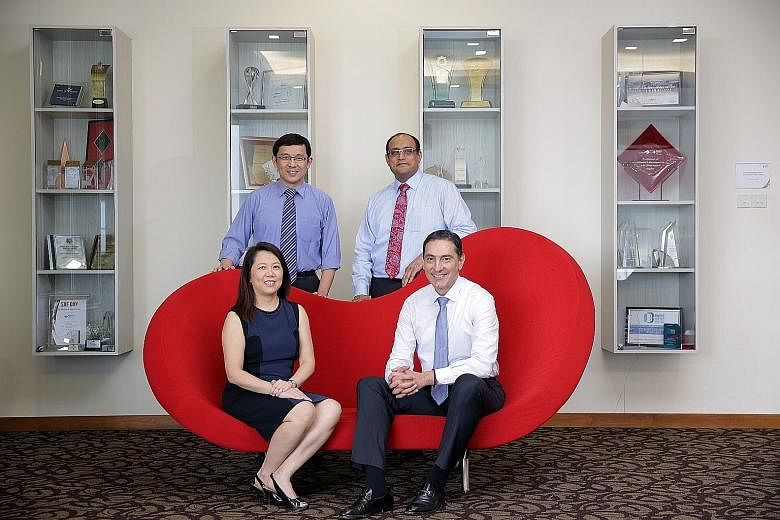The growing number of foreign doctors in the public sector appears to have touched a chord with readers, resulting in several letters in The Straits Times' Forum pages.
This followed news reports that more than one in four doctors working in the public sector are foreigners.
Readers' concerns fall into two broad categories: those who are upset that young Singaporeans who want to become doctors have been denied that opportunity when they were turned down by medical schools here, even though there is a heavy demand for the profession; and people worried that patients might not get the best care with the foreign influx.
The first concern is valid but overstated, while the second is misplaced.
First, those who argue that Singapore should have given more local students the chance to study medicine here, instead of driving them away to universities overseas with the risk of losing them to those countries once they qualify, have a valid point. A shortage of university places to study medicine did result in hundreds going overseas in the past. Many stayed on overseas to work, and Singapore lost their talent.
But we can't turn back the clock.

Meanwhile, the policy has changed. Singapore now has three medical schools with a combined intake of 460 students this year - double the number 10 years ago.
Should even more students be given places to study medicine at local universities?
It might not be prudent to do so. Unlike other professions, the training of good doctors requires a significant amount of high-quality supervision. Book learning, no matter how well assimilated, is just not good enough when lives are at stake.
The second concern: Does a high proportion of foreign doctors compromise patient care?
The Ministry of Health requires foreign-trained doctors to be supervised when they start working here. It isn't easy to find enough senior doctors to do this.
A few years ago, the Singapore Medical Council (SMC), which is in charge of registering doctors, eased some of the supervisory requirements. Changes include putting some better foreign-trained doctors on a fast track so they can start working independently earlier, allowing registrars - or trainee specialists - to help in supervising new doctors and increasing the number of newbies a senior doctor can oversee.
There were some concerns raised then that this might lower the quality of healthcare, but the authorities gave the assurance that standards would remain high.
This begs the question of just how well-trained foreign doctors are.
A senior public-sector doctor said the experience and abilities of foreign doctors vary greatly. Some are highly competent. Others might require close supervision.
Singapore now accepts medical graduates from close to 160 universities. While all the universities on the list were chosen for their high standard of teaching, according to some supervising doctors here not all their graduates live up to the expected standards.
However, this is not an insurmountable problem. Those who are found to be lacking can be axed, the promising ones can be given support to improve and the good ones will be retained and, hopefully, will eventually call Singapore home.
One issue is that a good number of the recognised universities teach in a non-English language, so not all their graduates are fluent in English. The SMC requires proficiency in English as a prerequisite for admitting foreign doctors.
Will poor English fluency hinder not just communication, but also result in inferior care?
Will it cause problems in doctor-patient relations?
In Singapore's context, however, even if doctors speak English fluently, not all local patients do. Many doctors, especially in the public-sector hospitals and clinics, need to use Malay or a Chinese dialect to converse with older patients.
However, this problem is not unique to foreign doctors. Some younger Singaporean doctors too lack such language skills.
To overcome this, hospitals provide translators where needed, and offer doctors basic training in local languages.
The dilemma the Health Ministry faces is that there simply are not enough local doctors to cater to a growing, and rapidly ageing, population. Foreign doctors help make up the numbers.
Ten years ago, in 2005, there was one doctor for every 640 people. Last year, there was one doctor for every 466 people. The improved ratio is due in large part to the influx of foreign doctors over the past decade. As a result, patients get appointments faster at public hospitals, have shorter waiting times to see polyclinic doctors and get more time with doctors when it is their turn.
The Government is trying all ways to make up the doctor numbers. In addition to raising the medical school intake and welcoming foreign doctors, it is also trying to get Singaporean students overseas to come back to Singapore to practise.
It offers to pay up to 60 per cent of tuition fees, capped at $50,000 a year, for the last three years of medical study overseas. The idea is to bring back as many trained Singaporean doctors as possible. Last year, 160 foreign-trained locals returned to work here, up from 121 in 2013.
The bottom line is, Singapore needs more doctors, especially with Sengkang and Woodlands general hospitals and Yishun, Sengkang, Outram and Woodlands community hospitals opening over the next seven years.
Cutting off the supply of foreign doctors would be a case of cutting off the nose to spite the face. It is patients here who would suffer.
It is far better for patients if foreign doctors receive the support and training needed to integrate into the healthcare system here, than if foreign doctors are stopped from coming altogether.
facebook.com/ST.Salma


